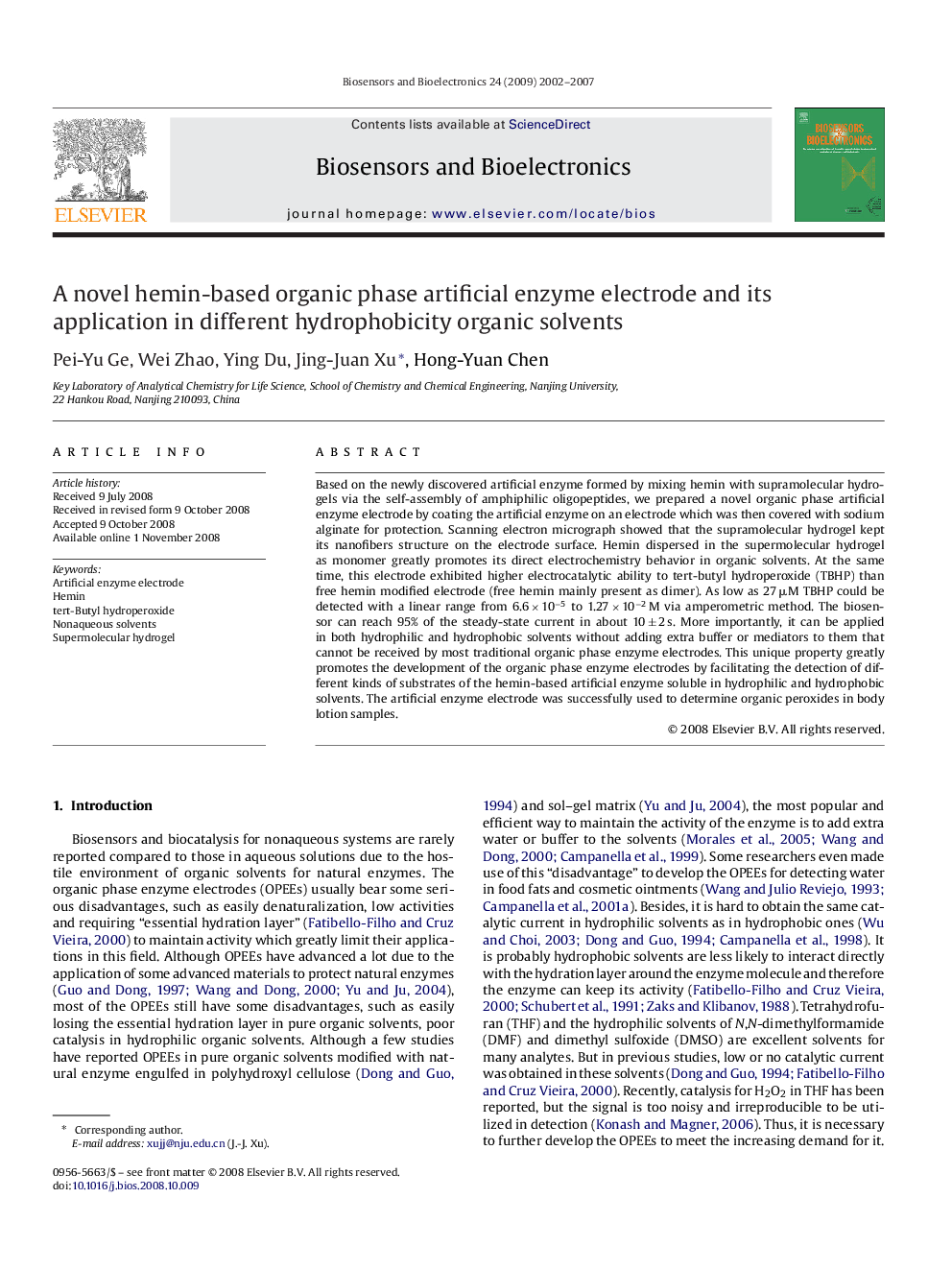| Article ID | Journal | Published Year | Pages | File Type |
|---|---|---|---|---|
| 869753 | Biosensors and Bioelectronics | 2007 | 6 Pages |
Based on the newly discovered artificial enzyme formed by mixing hemin with supramolecular hydrogels via the self-assembly of amphiphilic oligopeptides, we prepared a novel organic phase artificial enzyme electrode by coating the artificial enzyme on an electrode which was then covered with sodium alginate for protection. Scanning electron micrograph showed that the supramolecular hydrogel kept its nanofibers structure on the electrode surface. Hemin dispersed in the supermolecular hydrogel as monomer greatly promotes its direct electrochemistry behavior in organic solvents. At the same time, this electrode exhibited higher electrocatalytic ability to tert-butyl hydroperoxide (TBHP) than free hemin modified electrode (free hemin mainly present as dimer). As low as 27 μM TBHP could be detected with a linear range from 6.6 × 10−5 to 1.27 × 10−2 M via amperometric method. The biosensor can reach 95% of the steady-state current in about 10 ± 2 s. More importantly, it can be applied in both hydrophilic and hydrophobic solvents without adding extra buffer or mediators to them that cannot be received by most traditional organic phase enzyme electrodes. This unique property greatly promotes the development of the organic phase enzyme electrodes by facilitating the detection of different kinds of substrates of the hemin-based artificial enzyme soluble in hydrophilic and hydrophobic solvents. The artificial enzyme electrode was successfully used to determine organic peroxides in body lotion samples.
